Text
A CLOSER LOOK AT TRANSLATING CUNEIFORM (Sumerian-Akkadian)

Cuneiform is translated in at least 3 stages:
1st. Transliteration (transforming the signs into sounds using English alphabet
2nd. A literal translation; at this point it's kinda like a word soup or a sentence anagram.
3rd stage: rearrangement of the translation to make more sense.
4th: Translating the entire sentence into proper literate English; Sometimes we have to fill in the gaps here and there when the context gets a little lost. We can do this by examining where the inscription was found and which area it was from etc...
Working down each line at a time from left to right.
Note: ^d = diger (pronounced "dinger")
e = pronounced more like "a"
^ki = signifies a city
When we see a word repeated "kur kur" it's one of their ways to signify plurality
1. ^d enlil = divine/god enlil
2. Lugal kur kur ra = king enemy lands of
Note: "kur" has several meanings; it can mean mountain or enemy lands. I've seem it translated as simply lands - but as far as I'm aware "Kalam" means lands... So I'm gonna take this to mean "conquered lands"
3. Lugal a ni = his king
4. Un ^d nammu = The divine king nammu
5. Nita kala ga = the might man
6. Lugal Urim^ki ma = the king of Ur
7. Lugal ke-en-gi ki-uri-ke(4) the king of Sumer and Akkad
8. e-kur = mountain house/temple
9. e-ki-ag-ge-ni = beloved his
10. Mu-na-du(3) = he built
Note: if you see a number after a word - that's just because that word has many meanings, and it's just being numbered to signify which.
Rearranged English translation;
1. Divine enlil
2. King of conquered lands
3. His king
4. Divine king nammu
5. The might man
6. The king of Ur
7. The king of Sumer, The king of Akkad
8. Mountain house/temple
9. His beloved
10. He built
That's what I mean by a sentence anagram. Now using all the context of the signs and where it was found etc - it's translated into literate English.
"The divine king Nammu of Ur, the mighty Man, the king of Ur, the king of Sumer and Akkad, His King, the king of conquered lands, he built the mountain temple in the name of his beloved divine God Enlil."



3 notes
·
View notes
Text
Sumerian writing (cuneiform)
Cuneiform was one of the earliest systems of writing, invented by Sumerians in ancient Mesopotamia. It is distinguished by its wedge-shaped marks on clay tablets, made by means of a blunt reed for a stylus. invented in around 3500-4000 BC Its the oldest form of writing we know of - and it's rather confusing. It's read from right to left but when translated in to:
1st the English alphabet and 2 2nd into full English
It - like many literal translated languages - looks a bit of a mess, a bit of a word soup, a sentence anagram. So it's then translated a 3rd time to make more sense in modern English. For instance:
E(2)-Lugal-la
(translated straight from cuneiform)
Would literally translate as:
The house the king of
So we translate it a 3rd time to make sense into:
The house of the king
Or
Dumu lugal-la-ke-ne
= son king of the "s"
= sons of the king
Below: My attempt at at drawing cuneiform. The first set of signs translates to the English alphabet as:
Lugal dumu mah-la-ke-ne
The magnificent kings son

#cuneiform#sumer#ancient sumeria#sumertime#art#artists on tumblr#my art#fan art#artgallery#anceint#greek gods#old gods#godsword#godscreation#oh god#ancient aliens#ancientgods#ancients#ancestors
1 note
·
View note
Text
THE ANUNNAKI
Im sure many of you have heard of the Anunnaki - maybe if only from a crazy conspiracy theorist friend who's always banging on about illuminati, but no matter where you heard the name - or if you've never heard of them at all - you cant deny the strength of its allure. The very name itself is captivating; The "Anun-naki".... It's almost hypnotic in its sound. But these beings are not the delusional thoughts of a madman, nor are they the fabricated lie of a conman. These are the religious dieties of Ancient Mesopotamia. These are the cherished Gods of the sumerians - a culture even older than the Egyptians; with a mysterious language isolate: meaning it has no demonstrable genealogical (or "genetic") relationship with other languages. Coupled with the fact that it's one of - if not the - oldest civilisations that we know of. It's almost like they just popped out of nowhere and into our history books; with a fully formed elegant writing system, and a whole pantheon of Gods. It's like civilized history started with them. And infact, the word "Sumer"... translates as "land of civilized Kings".

We have hundreds of thousands cuneiform tablets that have been found, deciphered, and translated. With the vast majority talking of these beings... The Anunnaki. What is interating, is that these tablets talk about mans creation, they talk of a flood, they talk of giant beings coming to Earth who lived for hundreds of years (referring to the Anunnaki, of course).

In addition to being Gods they refer to the Anunnaki as "the sky people" - is this story sounding family to any judeo-christians that might be reading? Doesn't it bare a striking resemblance to the creation story of Judaism, Christianity and Islam; I'm referring to the flood and the Nephilim, and their escapades on Earth? No? Yes?


The Sumerian civilization existed from about 4100 B.C.E. until around 1750 B.C.E. And they believed these beings existed - I have no doubt about that - there is mountains of evidence to support their beliefs in the form of clay tables, written upon in their fascinating language that will long outlast all of our books and web pages from all of our libraries... At the very least they certainly believed in what they said.

Their beliefs do differ from modern religions somewhat though, but maybe not as you'd expect - I'll get into this in a later post... But if you where living in around 4000 BC, and witnessed giant beings of the sky come to earth - it would be very easy to Interpret them as Gods, even if they were something else. Don't you think ?


EXTRA FACT
The most intriguing thing about the sumerians to me is their knowledge of all of the planets and a good idea of the sizes; even Pluto - I mean we didn't even discover that untill the 1930s ffs... Something to think about.


#sumer#ancient sumeria#supernatural rp#sunglasses#ancientgods#ancients#anunnaki#black and white#cuneiform#epic of gilgamesh#ancient aliens#old gods#godsword#godscreation#greek gods#godsplan#gods#godspeed
8 notes
·
View notes
Text
OLDEST RECORDING OF HUMAN VOICE
This is quite eerie, it was recorded in 1860 on paper!! They knew how to record it but not able to play it back - Think inventing a CD before the CD Player - it was only first heard in 2008!!
It's ten-second fragments of the French folk song 'Au Clair de la Lune'. It was recorded on 9 April 1860 by inventor Edouard-Leon Scott de Martinville (France). Discovered in 2008 by researchers in Paris, the clip was created on paper using a phonautograph, a device for recording sounds visually, without being able to play them back. The paper recording was analysed by scientists at Lawrence Berkeley National Laboratory (USA), who used optical imaging as a 'virtual stylus', allowing the clip to be played back for the very first time.
Have a listen
https://bit.ly/2YNmr0X
https://youtu.be/uBL7V3zGMUA
youtube

#music#music news#classical music#vintage#eerie#ghost#little ghost#oldest recording#phonautograph#old#awesome#knowledge#education
0 notes
Photo

This is where the long and arduous Pacific Crest Trail hike ends. Manning Provincial Park, BC Canada [4032x3024][OC] via /r/EarthPorn https://ift.tt/2BsnXN4
7 notes
·
View notes
Text
*A BRIEF LOOK AT MESOPOTAMIAN CUNEIFORM *
There are many notable figures in the deciphering of cuneiform spanning around two hundred years. The deciphering of this ultimately led to the deciphering of the oldest and most fascinating (my opinion) language of the sumerians - it's one thing to study and listen to modern scholars of ancient time, but it's another whole and brilliant insight into history if you can read ancient texts for yourself; even if it's something as simple as a ancient shopping list. It puts the mind and thoughts of someone who lived over 6000 years ago directly in touch with your own consciousness.
In 1638 an Englishman named Sir Thomas Herbert reported in his book of seeing at Persepolis carved on the wall "a dozen lines of strange characters... Consisting of figures that looked obelisk, triangular, and pyramidal". He thought they resembled Greek. In the his book he reproduced what he witnessed and thought they were 'legible and intelligible' and so, therefore decipherable. He also guessed correctly, that they represented not letters or hieroglyphics - but words and syllables, and were to be read from left to right. (Although, when you start to learn and translate cuneiform into English, you find it translates almost like a sentence anagram).
Sumerian is the oldest language we know of and It remained extinct for thousands of years untill in 1602 Antonio de Gouvea - a professor of theology, set in motion a series of events that would ultimately lead to the deciphering of the epic of Gilgamesh, by discovering - whilst visiting sites in the middle east - some tablets encoded with strange writing. As years passed he had copies made of the tablets along with the find of some characters he had seen in Persepolis, some inscribed bricks from city of Ur, and the writings found in the ruins of Babylon. However, he never made an attempt to decipher the magnificent finds.
In 1776 Carsten Neibuhur brought the first reasonably complete and accurate copies of the inscriptions at Persepolis to Europe, and there they where further deciphered by Friedrich Münter who correctly translated the sign for "King". Which is frequently used and never varies. Shown here....

Moving on to 1802 (The 2nd year into a century seems to be crucial with these scholars) and Georg Friedrich Grotefend had correctly identified each King in the inscriptions, but his identification of the value of individual letters was still quite defective. Grotefend only identified correctly eight letters among the thirty signs he had collated. But not to take anything away from Grotefend - imagine the nightmare of having to decipher the names of Kings in an extinct semi-picture part syllabic language.

But sadly he was discredited among his peers; at first. It was only in 1823 that Grotefend's discovery was confirmed, when a French expert in ancient linguistics called Jean-François Champollion confirmed his work. Champollion, who had just deciphered Egyptian hieroglyphs, was able to read the Egyptian dedication of a quadrilingual hieroglyph-cuneiform inscription on an alabaster vase in the Cabinet des Médailles, the Caylus vase.
In 1836, the French scholar Eugène Burnouf discovered that the first of the inscriptions published by Niebuhr contained a list of the satrapies of Darius. With this clue in his hand, he identified and published an alphabet of thirty letters, most of which he had correctly deciphered.
The next significant leap in the decipherment of Mesopotamian cuneiform came from work on the trilingual Bīsitūn inscription. Henry Rawlinson, a British army officer stationed in Baghdad, made the first accurate copies of this inscription, which are engraved on a nearly inaccessible high cliff overlooking a valley in Bisitun, Iran. The fact that this inscription included three versions of the same text written in Old Persian, – already satisfactorily deciphered – Elamite, and Babylonian was arguably the most significant factor in the decipherment of Mesopotamian cuneiform, it was basically the Rosetta stone of Mesopotamian cuneiform.
After translating Old Persian, Rawlinson and the Irish Assyriologist Edward Hincks, began to decipher the other cuneiform scripts. The decipherment of Old Persian was thus notably instrumental to the decipherment of Elamiteand Babylonian, thanks to the trilingual Behistun inscription.

The decipherment of Babylonian ultimately led to the decipherment of Akkadian, which was a close predecessor of Babylonian, which in turn - after many other discoveries and the precious time of several magnificent minds in the pursuit of knowledge we come to George Smith.


George smith: The son of a working-class family in Victorian England, Smith was limited in his ability to acquire a formal education. At age fourteen, he was apprenticed to the London-based publishing house of Bradbury and Evans to learn banknote engraving, at which he excelled. From his youth, he was fascinated with Assyrian culture and history. In his spare time, he read everything that was available to him on the subject. His interest was so keen that while working at the printing firm, he spent his lunch hours at the British Museum, studying the cuneiform tablets that had been unearthed by Henry Rawlinson (and others). Smith's natural talent for cuneiform studies was noticed and he was brought to audience of Rawlinson, who immediately spotted his talent. As early as 1861, he was working evenings sorting and cleaning the mass of friable fragments of clay cylinders and tablets in the Museum's storage rooms. In 1866 Smith made his first important discovery, the date of the payment of the tribute by Jehu, king of Israel, to Shalmaneser III. Sir Henry suggested to the Trustees of the Museum that Smith should join him in the preparation of the third and fourth volumes of The Cuneiform Inscriptions of Western Asia. And so, Smith was appointed Senior Assistant in the Assyriology Department early in 1870.
1872, Smith achieved worldwide fame by his translation of the Chaldaean account of the Great Flood, which he read before the Society of Biblical Archaeology whose audience included the Prime Minister William Ewart Gladstone. This work is better known today as the eleventh tablet of the Epic of Gilgamesh. Legend hard that upon translating the peice Smith stripped naked and ran around the immediate area within the British museum joyfully declaring to be the first person to read the inscription in 6000 years....
#Ancients #sumerian #george Smith #Annunaki #Mesopotamia #cuneiform #epic of Gilgamesh #Henry Rawlinson #Georg Friedrich Grotefend #Ancient Gods #Rosetta stone




#mesopotamia#anubis#anu#enkidu#enlil#epic of gilgamesh#bull of heaven#george smith#british museum#british
6 notes
·
View notes
Text
This Week in Science (June 8-14, 2020)
- Blood Type: https://bit.ly/2YEYtE6
- Face Masks: https://bit.ly/2YwTchz
- Negative Thinking: https://bit.ly/3e0NlrB
- Photoreceptors: https://bit.ly/2YA69aA
- Underwater WiFi: https://bit.ly/3huCZ59
- Radio Burst: https://bit.ly/2YxzSkq
- Earth's Core: https://bit.ly/2YA6k5K
- Reversing Time: https://bit.ly/2MYXVmO

10 notes
·
View notes
Photo

Holding Jupiter in one hand, stirring up cosmic energy in the other. This took quite a few tries, but we got it! Model : Me. Long exposure galaxy shot by Photographer : Jeremiah Sorells via /r/spaceporn https://ift.tt/2YM9F30
4 notes
·
View notes
Photo






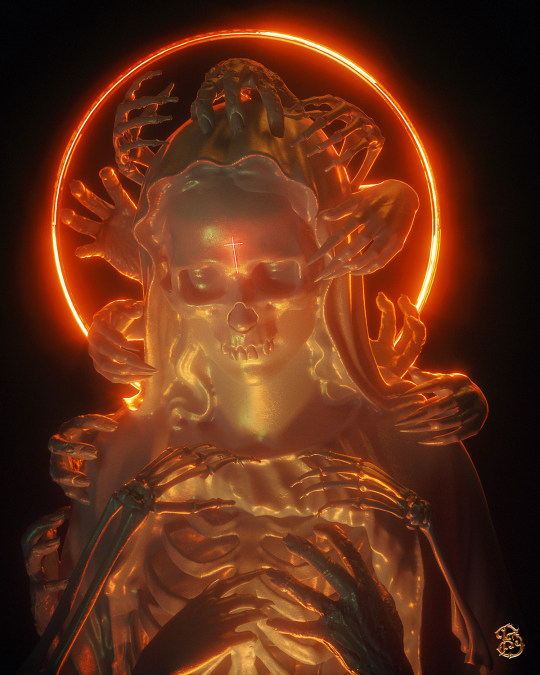
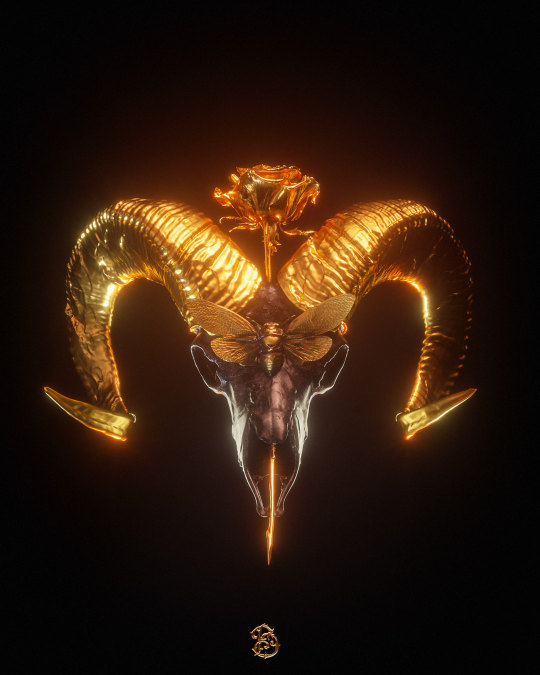
Demonic Explorations by Billelis 💀
This artist on Instagram
2K notes
·
View notes
Photo



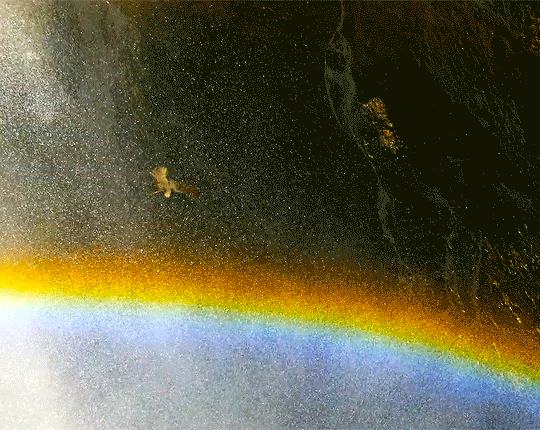
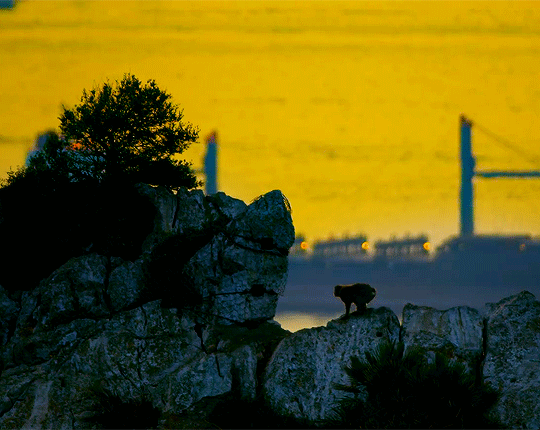
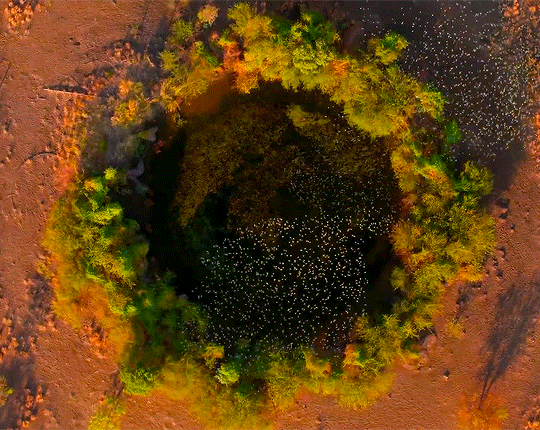



SEVEN WORLDS, ONE PLANET
2019 | Presented by: David Attenborough
68K notes
·
View notes
Text
THE OLDEST LOVE LETTER IN HUMAN HISTORY!
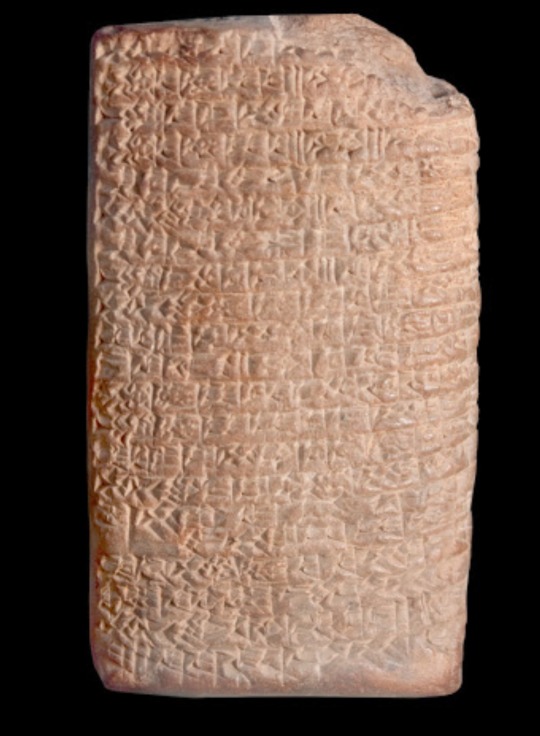
Bridegroom, dear to my heart; goodly is your beauty, honeysweet; lion, dear to my heart'.
These are the passionate words of a lover to a king, from more than 4,000 years ago, it's the oldest known love poem ever found.
The loving words were passed down over generations, eventually inscribed on an 8 th century BC Sumerian cuneiform tablet small enough to fit in the palm of your hand. It was uncovered in the 1880s in Nippur (Important city in ancient sumer), this region is what we now call Iraq. Its held in The Istanbul Museum of the Ancient Orient.
The full translation is as follows:
Bridegroom, dear to my heart, Goodly is your beauty, honeysweet, Lion, dear to my heart, Goodly is your beauty, honeysweet.
Bridegroom, let me caress you, My precious caress is more savory than honey, In the bedchamber, honey-filled, Let me enjoy your goodly beauty, Lion, let me caress you. My precious caress is more savory than honey.
Bridegroom, you have taken your pleasure of me, Tell my mother, she will give you delicacies, My father, he will give you gifts. You, because you love me, Give me pray of your caresses, My lord god, my lord protector, My SHU-SIN, who gladdens ENLIL's heart, Give my pray of your caresses
Historians suggest the words were recited by a bride of Sumerian King Shu-Sin, fourth ruler of the Third Dynasty of Ur, who reigned between 2037 and 2029 BC, and used as a script for a ceremonial recreation of the sacred marriage. It would have been sung at the New Year festival, and at banquets and festivals accompanied by music and dance.
#Ancients #oldest love letter #poem #oldest poem #Annunaki #Enlil #ancient Gods #marriage #festivities #sumer #sumerian gods
#ancients#ancientgods#ancient sumeria#oldest love letter#cuneiform#sumer#mesopotamia#mythology#anunnaki
11 notes
·
View notes
Text
*A BRIEF LOOK AT MESOPOTAMIAN CUNEIFORM *
There are many notable figures in the deciphering of cuneiform spanning around two hundred years. The deciphering of this ultimately led to the deciphering of the oldest and most fascinating (my opinion) language of the sumerians - it's one thing to study and listen to modern scholars of ancient time, but it's another whole and brilliant insight into history if you can read ancient texts for yourself; even if it's something as simple as a ancient shopping list. It puts the mind and thoughts of someone who lived over 6000 years ago directly in touch with your own consciousness.
In 1638 an Englishman named Sir Thomas Herbert reported in his book of seeing at Persepolis carved on the wall "a dozen lines of strange characters... Consisting of figures that looked obelisk, triangular, and pyramidal". He thought they resembled Greek. In the his book he reproduced what he witnessed and thought they were 'legible and intelligible' and so, therefore decipherable. He also guessed correctly, that they represented not letters or hieroglyphics - but words and syllables, and were to be read from left to right. (Although, when you start to learn and translate cuneiform into English, you find it translates almost like a sentence anagram).
Sumerian is the oldest language we know of and It remained extinct for thousands of years untill in 1602 Antonio de Gouvea - a professor of theology, set in motion a series of events that would ultimately lead to the deciphering of the epic of Gilgamesh, by discovering - whilst visiting sites in the middle east - some tablets encoded with strange writing. As years passed he had copies made of the tablets along with the find of some characters he had seen in Persepolis, some inscribed bricks from city of Ur, and the writings found in the ruins of Babylon. However, he never made an attempt to decipher the magnificent finds.
In 1776 Carsten Neibuhur brought the first reasonably complete and accurate copies of the inscriptions at Persepolis to Europe, and there they where further deciphered by Friedrich Münter who correctly translated the sign for "King". Which is frequently used and never varies. Shown here....

Moving on to 1802 (The 2nd year into a century seems to be crucial with these scholars) and Georg Friedrich Grotefend had correctly identified each King in the inscriptions, but his identification of the value of individual letters was still quite defective. Grotefend only identified correctly eight letters among the thirty signs he had collated. But not to take anything away from Grotefend - imagine the nightmare of having to decipher the names of Kings in an extinct semi-picture part syllabic language.

But sadly he was discredited among his peers; at first. It was only in 1823 that Grotefend's discovery was confirmed, when a French expert in ancient linguistics called Jean-François Champollion confirmed his work. Champollion, who had just deciphered Egyptian hieroglyphs, was able to read the Egyptian dedication of a quadrilingual hieroglyph-cuneiform inscription on an alabaster vase in the Cabinet des Médailles, the Caylus vase.
In 1836, the French scholar Eugène Burnouf discovered that the first of the inscriptions published by Niebuhr contained a list of the satrapies of Darius. With this clue in his hand, he identified and published an alphabet of thirty letters, most of which he had correctly deciphered.
The next significant leap in the decipherment of Mesopotamian cuneiform came from work on the trilingual Bīsitūn inscription. Henry Rawlinson, a British army officer stationed in Baghdad, made the first accurate copies of this inscription, which are engraved on a nearly inaccessible high cliff overlooking a valley in Bisitun, Iran. The fact that this inscription included three versions of the same text written in Old Persian, – already satisfactorily deciphered – Elamite, and Babylonian was arguably the most significant factor in the decipherment of Mesopotamian cuneiform, it was basically the Rosetta stone of Mesopotamian cuneiform.
After translating Old Persian, Rawlinson and the Irish Assyriologist Edward Hincks, began to decipher the other cuneiform scripts. The decipherment of Old Persian was thus notably instrumental to the decipherment of Elamiteand Babylonian, thanks to the trilingual Behistun inscription.

The decipherment of Babylonian ultimately led to the decipherment of Akkadian, which was a close predecessor of Babylonian, which in turn - after many other discoveries and the precious time of several magnificent minds in the pursuit of knowledge we come to George Smith.


George smith: The son of a working-class family in Victorian England, Smith was limited in his ability to acquire a formal education. At age fourteen, he was apprenticed to the London-based publishing house of Bradbury and Evans to learn banknote engraving, at which he excelled. From his youth, he was fascinated with Assyrian culture and history. In his spare time, he read everything that was available to him on the subject. His interest was so keen that while working at the printing firm, he spent his lunch hours at the British Museum, studying the cuneiform tablets that had been unearthed by Henry Rawlinson (and others). Smith's natural talent for cuneiform studies was noticed and he was brought to audience of Rawlinson, who immediately spotted his talent. As early as 1861, he was working evenings sorting and cleaning the mass of friable fragments of clay cylinders and tablets in the Museum's storage rooms. In 1866 Smith made his first important discovery, the date of the payment of the tribute by Jehu, king of Israel, to Shalmaneser III. Sir Henry suggested to the Trustees of the Museum that Smith should join him in the preparation of the third and fourth volumes of The Cuneiform Inscriptions of Western Asia. And so, Smith was appointed Senior Assistant in the Assyriology Department early in 1870.
1872, Smith achieved worldwide fame by his translation of the Chaldaean account of the Great Flood, which he read before the Society of Biblical Archaeology whose audience included the Prime Minister William Ewart Gladstone. This work is better known today as the eleventh tablet of the Epic of Gilgamesh. Legend hard that upon translating the peice Smith stripped naked and ran around the immediate area within the British museum joyfully declaring to be the first person to read the inscription in 6000 years....
#Ancients #sumerian #george Smith #Annunaki #Mesopotamia #cuneiform #epic of Gilgamesh #Henry Rawlinson #Georg Friedrich Grotefend #Ancient Gods #Rosetta stone




#deep#reality#good#ancient sumeria#epic of gilgamesh#george smith#henry rawlinson#british museum#akkadian#royal city or ur#anunnaki#godscreation#godsword#old gods#mythology#pantheon#polytheism#greek polytheism#gaulish polytheism#hellenic polytheism#hard polytheism
6 notes
·
View notes
Text




Jupiter: not as beautiful as it's neighbour "Saturn" (in my humble opinion), but still unbelievably fascinating. The 5th and largest planet from the sun - 318 Earth masses but only 1/1000 the mass of the sun at 1.9×10^27kg. Jupiter is so big it is over twice the mass of all other planets in the solar system combined; if it were just ×13 the mass as it currently is, it woukd be considered a "brown dwarf star". Jupiter travels at around 13.1 Km/s - at an average distance of 5.2 AU (779 million km) around the sun.
If you enjoy mathematics you can use keplers third law p^2=Au^3 to figure out what equates to a Jupiter year, or it's "orbital period". P = time, Au = distance from sun (1Au = 93 million miles or ×1.6 for km). I'm a bit of a nerd so I enjoy things like this, so...
P^2 = Au^3 (use p in years, or Y)
Au = 5.2 (Astronomical Unit)
So....
Y = SqRt(5.2^3)
Y = 11.86 years
1 Jupiter year = 11.86 Earth years
As of today we've found 79 moons that orbit Jupiter some of which you can see in the photo - to which I am sure 4 of them are the Galilean moons discovered in 1610 by Galileo Galilei: Ganymede, Callisto, Io and Europa.
Jupiter is named after the Roman god of the same name, and is the King of the God's, the God of thunder, and the God of the sky who (along with the actual planet) has been known to humans since the ancients. In ancient Greece he was known as "Zeus". In ancient Egypt he was know as "Amun", and in Ancient Sumer and throughout Mesopotamia he was known as "Anu" or "Marduk" (Babylonian) and ancestor to the "Annunaki" pantheon. Throughout the centuries and civilisations I'm sure his name has changed many a time, but what remains the same is he is always portrayed as one of - if not the - most powerful of God's.

#Astronomy #Gods #Ancients #Ancient Egypt #Ancient Greece #Ancient Rome #Annunaki #Mesopotamia #space #Jupiter #photos #Sumerian #science #history #mathematics
2 notes
·
View notes
Text




Jupiter: not as beautiful as it's neighbour "Saturn" (in my humble opinion), but still unbelievably fascinating. The 5th and largest planet from the sun - 318 Earth masses but only 1/1000 the mass of the sun at 1.9×10^27kg. Jupiter is so big it is over twice the mass of all other planets in the solar system combined; if it were just ×13 the mass as it currently is, it woukd be considered a "brown dwarf star". Jupiter travels at around 13.1 Km/s - at an average distance of 5.2 AU (779 million km) around the sun.
If you enjoy mathematics you can use keplers third law p^2=Au^3 to figure out what equates to a Jupiter year, or it's "orbital period". P = time, Au = distance from sun (1Au = 93 million miles or ×1.6 for km). I'm a bit of a nerd so I enjoy things like this, so...
P^2 = Au^3 (use p in years, or Y)
Au = 5.2 (Astronomical Unit)
So....
Y = SqRt(5.2^3)
Y = 11.86 years
1 Jupiter year = 11.86 Earth years
As of today we've found 79 moons that orbit Jupiter some of which you can see in the photo - to which I am sure 4 of them are the Galilean moons discovered in 1610 by Galileo Galilei: Ganymede, Callisto, Io and Europa.
Jupiter is named after the Roman god of the same name, and is the King of the God's, the God of thunder, and the God of the sky who (along with the actual planet) has been known to humans since the ancients. In ancient Greece he was known as "Zeus". In ancient Egypt he was know as "Amun", and in Ancient Sumer and throughout Mesopotamia he was known as "Anu" or "Marduk" (Babylonian) and ancestor to the "Annunaki" pantheon. Throughout the centuries and civilisations I'm sure his name has changed many a time, but what remains the same is he is always portrayed as one of - if not the - most powerful of God's.

#Astronomy #Gods #Ancients #Ancient Egypt #Ancient Greece #Ancient Rome #Annunaki #Mesopotamia #space #Jupiter #photos #Sumerian #science #history #mathematics
2 notes
·
View notes
Video
michaelmatti
I had one day in Eastern Tennessee to see as many waterfalls as I could. With heavy rain in the forecast later that day, I found myself trail running to try to fit as many waterfalls in as I could. I managed to visit a few before it started raining but then as I was making my way to this waterfall, it started sprinkling and then turned into a downpour on the hike out. Luckily I was able to see this waterfall, my favorite of the trip, before it really started raining. And luckily I had my
@eddiebauer
rainshell with me to shield my camera from the storm on the hike out. All in all, a wonderful and wet adventure in Eastern Tennessee.
493 notes
·
View notes
Photo

Chapel Rock - Pictured Rocks National Lakeshore [2972x3715][OC] via /r/EarthPorn https://ift.tt/2YHeVEN
3 notes
·
View notes
Photo

Stop along the Icefields Parkway to enjoy the view [OC] [4000x6000] via /r/EarthPorn https://ift.tt/2ZhwtGD
1 note
·
View note